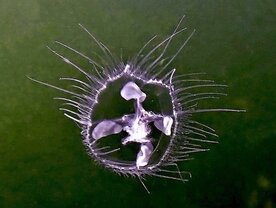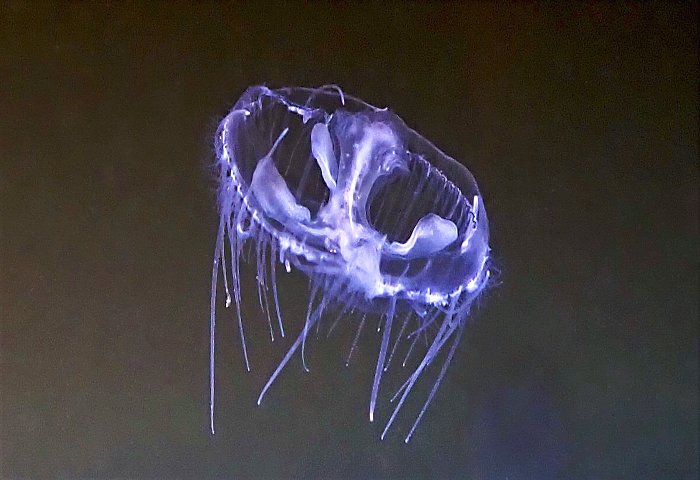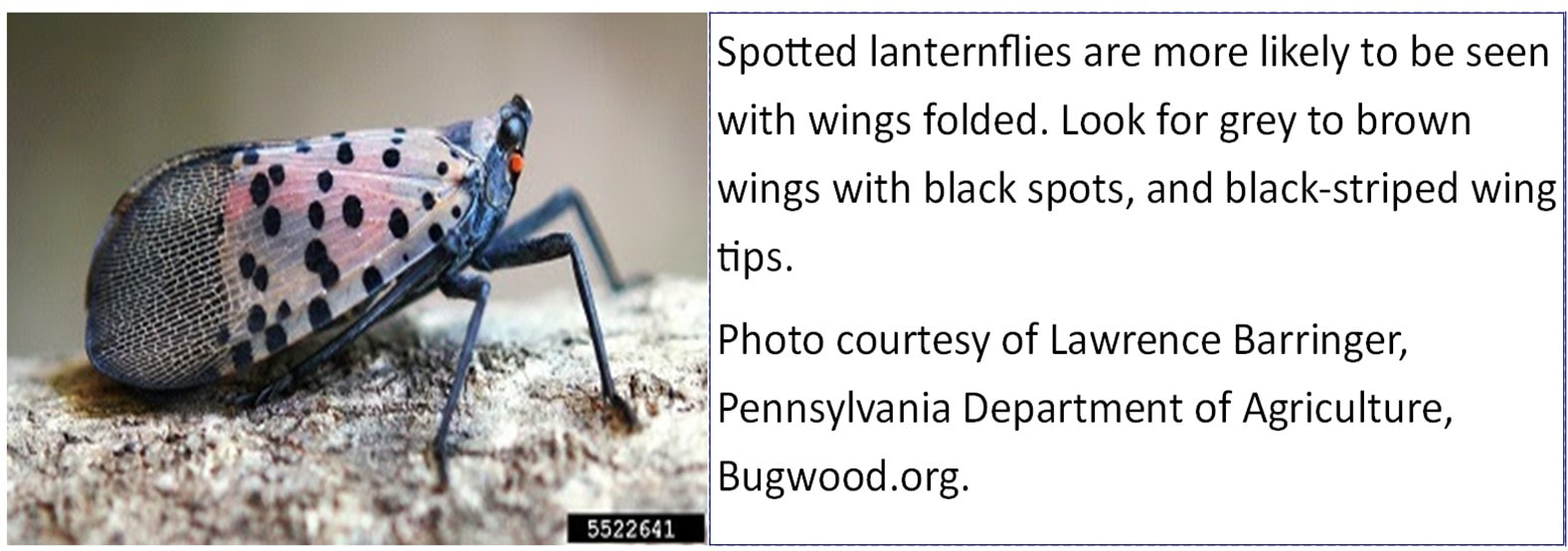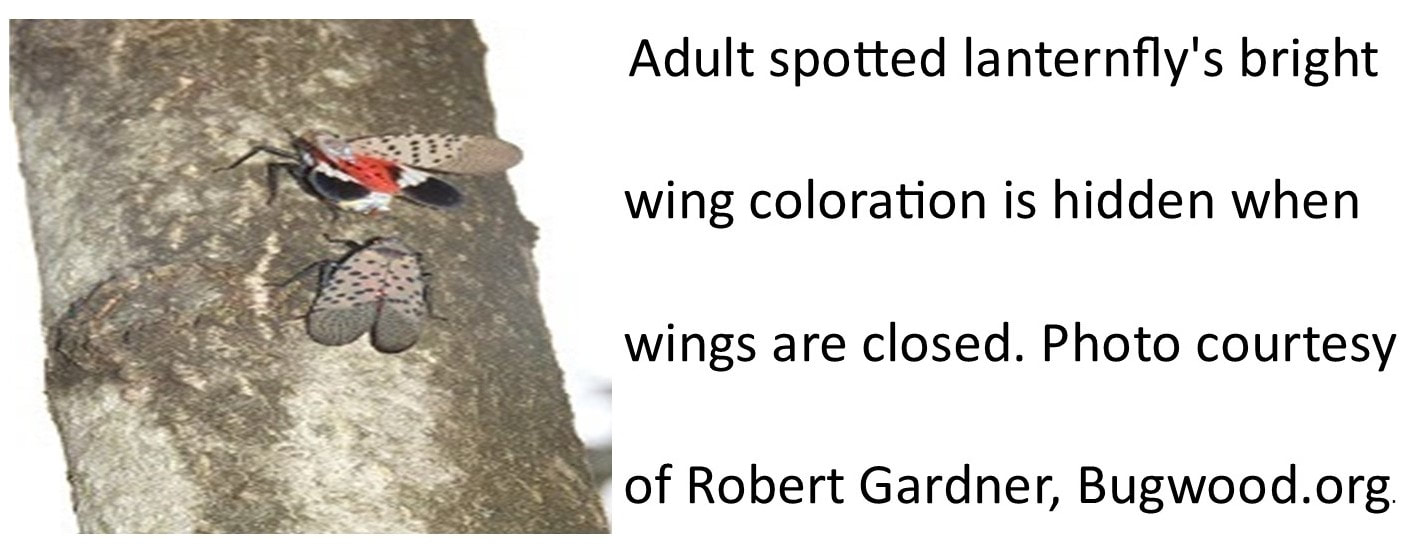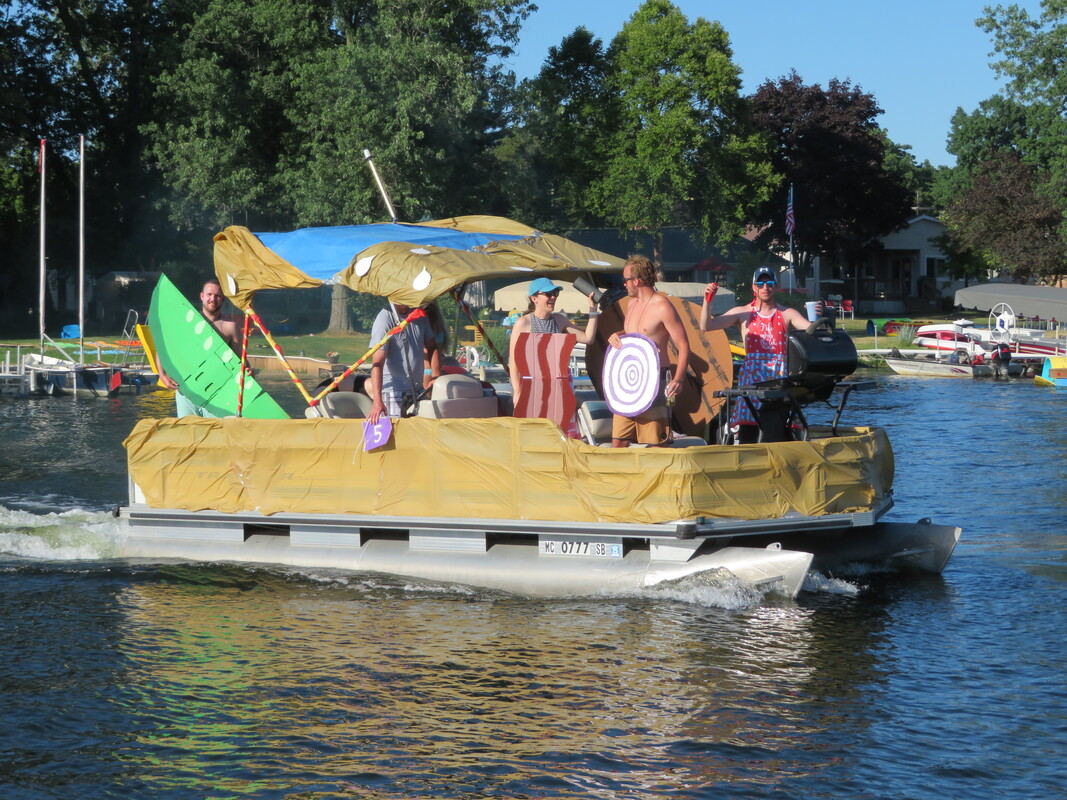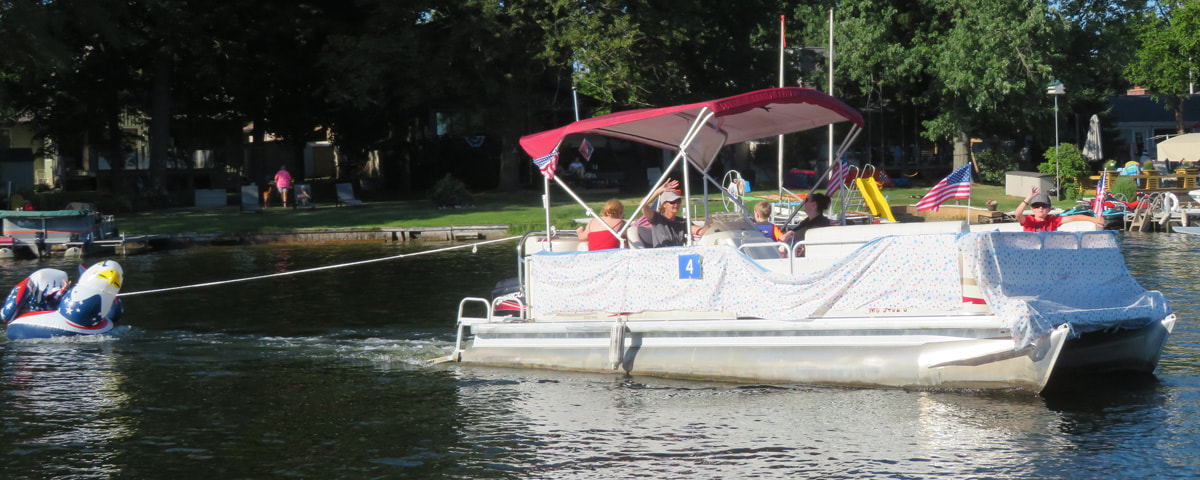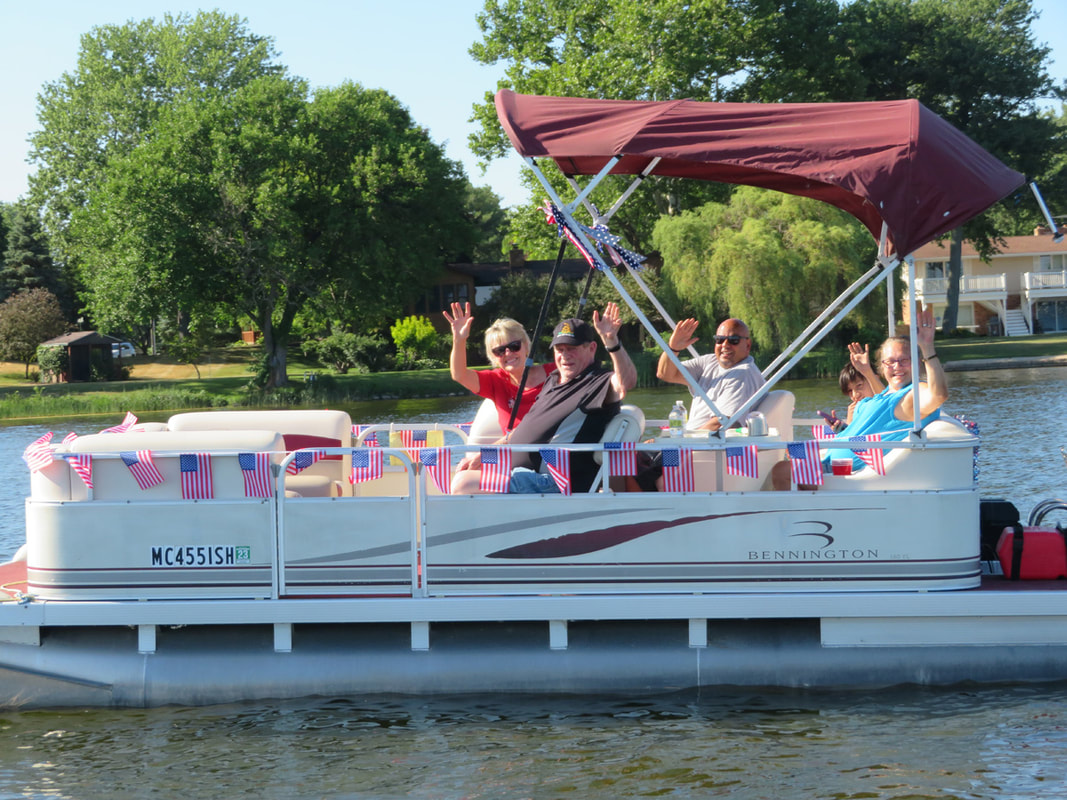Archives
July 2023
Categories |
Back to Blog
Understanding and Monitoring Your Well to Make Sure Your Water Is Safe!By: Ashley Mark, MDHHS; Sara Pearson, EGLE; Lon Nordeen, MLSA
There are over 1 million private residential wells in the state of Michigan, serving over 2.6 million people statewide. That is over 30% of Michigan residents! A private residential well supplies water to a single-family home. Water is pumped from groundwater using a water well. To learn more about the types of private wells, well components, and well construction visit the United States Environmental Protection Agency website. As a private residential well owner, you are responsible for the quality of your drinking water. It is important to monitor your well system and your drinking water to protect the health of you and your family. Maintaining your well involves regular inspections, testing, and if required, treatment. For more information about how to properly maintain your private residential well system, view the Drinking Water Well Maintenance Fact Sheet. Proper well maintenance is a great way to protect the quality of your drinking water. However, testing your drinking water for contaminants is the only way to know for sure what is in your drinking water. The Michigan Department of Health and Human Services (MDHHS) recommends testing annually for Coliform Bacteria, E. coli, Nitrate, and Nitrite. Visit the Care for MI Drinking Water Drinking Water Testing page for more information about what to test for and how to have your drinking water tested. In addition to MDHHS recommendations for testing, sometimes it is appropriate to consider testing for other contaminants. If you are a private residential well owner, it is important to understand what natural and human-made contaminants may be in the groundwater that you use for drinking water. For example, if your home is near a potential source of contamination, you might consider expanding what to test for. Learn more about what might be in the groundwater you drink, or contact your Local Health Department to learn about local concerns or recommendations. Still have questions or want to learn more? The MDHHS Care for MI Drinking Water website is where you can find more information about drinking water contaminants, testing, how to understand test results, treatment options, and more. Here you can also subscribe to receive the Drinking Water and Health newsletter in order to stay up to date on new initiatives happening through the MDHHS Division of Environmental Health’s Statewide Drinking Water Campaign. In addition to understanding how your well works, maintenance needs, and monitoring that needs to be done to ensure that your well is properly functioning and provides safe drinking water, protecting source water is another important part in maintaining the quality of your water. Water is constantly being recycled as it moves through the hydrologic cycle. The water in rivers, lakes and streams evaporates and condenses in the atmosphere to become clouds that eventually release the water back to the ground in various forms of precipitation. Precipitation replenishes our lakes, rivers and streams and also seeps into the ground recharging the groundwater supply. Groundwater discharges into some surface water bodies and some surface water bodies recharge the groundwater. This is a very generalized description of the hydrologic cycle as there are many ways that the water may be used throughout this cycle. For example, rainwater may be collected and used for watering a garden surface water and groundwater may be used in homes, businesses, and industries for many purposes. In your home it is commonly used for drinking, cooking, and washing. Once the water is used for these purposes, it is discharged either to a sanitary sewer system for treatment or to a septic system. The septic system is designed to collect solids in the tank and discharge the liquids to the ground. The soils in the subsurface act as a filter removing bacteria like coliforms from water as it moves through the soil and eventually recharges the groundwater. Groundwater may discharge to a surface water body, it may be drawn into a well for use again, or it may remain in the aquifer for quite some time. Overall, it is constantly reused for many purposes. Therefore, Michigan’s Public Health Code and local sanitary codes specify minimum separation distances between a well and a septic tank, septic tanks and wells from surface water bodies and floodplains, and specific construction materials and specifications for both wells and septic fields. A well that is too close to a septic tank may draw in water that is not adequately filtered and pose a health risk from the presence of bacteria. Septic tanks that are too close to surface water bodies can result in unfiltered waste being discharged to the water body causing a health risk to swimmers from elevated coliform bacteria and can also result in the growth of harmful strains of algae that can be lethal. Wells that are too close to surface water bodies may draw in surface water that is not as well filtered as the groundwater and is likely to have other types of harmful bacteria and parasites like Giardia that cause illness in people and pets. As water is used and is constantly being recycled, it may be mixed with detergents, hazardous substances, or may even be in contact with naturally occurring hazardous substances like arsenic. Water mixed with some of these substances can be odorless, tasteless, colorless and require more treatment than the typical septic or sanitary treatment offers. Therefore, source water, which is the water that you drink, protection practices become important. Contaminants released to the ground have a high probability of affecting the groundwater and surface water bodies which is why proper disposal of wastes is critical. Some everyday actions that can be taken to protect surface water and groundwater. The US Environmental Protection Agency offers some great suggestions you can take to protect your water.
0 Comments
Read More
Back to Blog
This person has a second or summer house on Lake of the Woods, and have cameras on their house in another state, if they saw someone breaking into that other house or doing something that needed the police to show up, they tried calling 911 while here in Decatur and asked 911 to pass their call onto where the other house is. While in Decatur, our 911 call center does not have the capability to forward your call to another location. You will have to get a hold of your local law enforcement through other means. Also if you have cameras on your house here on LOW, and saw something while not in Decatur, you can call the Van Buren county Sheriff at 269-657-2006, if you are in the town of Decatur the police department phone number is 269-423-2171. When you see something happening on your cameras is not the time to figure out what number to dial for law enforcement, have it figured out ahead of time and written down. Also do not forget about the Van Buren County Sheriff house watch program that is available at no charge. Just go to the Van Buren County Sheriff website to sign up for this service. Below is some information on this service.
Security checks are available to Van Buren County citizens who will be away from their homes, businesses, or other facilities for extended periods of time. Deputies will periodically check the exterior of the premises. This service is offered to deter potential burglars while your premise is unoccupied. If your plans change and you return home ahead of schedule, please notify the Van Buren County Sheriff's Office at 269-657-2006 so the home security checks can be stopped. Have a safe and enjoyable Thanksgiving. LOWIA
Back to Blog
Walleye10/11/2022 Get the rods and reels ready! We were just notified that this afternoon Michigan DNR stocked LOW with Walleye. There were 1100 fish, each averaging 5- 7 inches dropped in our lake. The fish were about six months old and should grow an inch or more by this fall. These walleye should be legal limit size around spring 2024, and females do grow faster, so sooner for them. Ibbys bait shop in town always has leeches for sale too. Walleye love leeches and nightcrawlers.
LOWIA
Back to Blog
Freshwater Jellyfish9/1/2022 Article from Michigan Lakes and Streams newsletter Sept 1, 2022. Editor's Note: This article focused on freshwater jellyfish originally appeared in this newsletter in the fall of 2019 - several reports of the appearance of the unique creature
in Michigan lakes over the course of the past couple of weeks have prompted us to re-publish for the sake of our many new subscribers. Story and Photos by Scott Brown, MWA Board Member / E-Newsletter Editor Evoking expressions of surprise and delight, the initial experience of observing an only sporadically occurring swarm of undulating freshwater jellyfish gracefully propelling themselves through the late summer warm waters of your favorite lake always seems to be a joyful one. Commonly referred to as “peach blossom fish” in their native China, words such as fascinating, graceful, elegant, ephemeral, and mysterious are often deployed by authors in their attempt to aptly describe the exotic freshwater jellyfish species known as Craspedacusta sowerbii that only occasionally appears in Michigan’s inland lakes. A native of China’s Upper Yangtze River basin, the exponentially increasing pace of international trade that has occurred over the course of the past century has inadvertently led to the fact that C. sowerbii has now been successfully introduced to every continent except Antarctica, and has become the most widely distributed freshwater jellyfish on earth. C. sowerbii and the nineteen other species of freshwater jellyfish in existence are classified as hydrozoans, a class of small colonial or solitary predatory animals that are related to sea anemones and corals. C. sowerbii belongs to the Cnidaria, a diverse phylum of hydrozoans that contains over 11,000 marine and freshwater species whose exotic physical appearance is primarily defined by a unique umbrella-like radial symmetry. Catalogued in England by naturalists in the 1880’s, C. sowerbii was first observed in Michigan waters in the 1930’s. Representing an extremely delicate and highly elastic gelatinous creature that is intolerant of intense wave action and fast-moving waters, the freshwater jellyfish species known as C. sowerbii that inhabits Michigan waters is most often observed floating or gracefully swimming near the sunlit surface of ponds, reservoirs, quarries, and quiet wind-sheltered areas of inland lakes. Lacking a brain, heart, respiratory system, skeleton, and even blood, the relatively simple, delicate anatomy of C. sowerbii is comprised of a translucent bell-shaped outer layer known as the epidermis; a middle layer consisting of a thick, highly elastic, grayish-blue in color gelatinous substance that is referred to as the mesoglea; and, representing a simple digestive system that acts as both a stomach and intestine with just one opening that serves as both mouth and anus, an inner layer that is referred to as the gastrodermis which includes a crude stomach-like structure that is referred to as the manubrium. Circulation of nutrients within the ancient organism is facilitated by the existence of four radial canals that originate along the edges of the manubrium. Freshwater jellyfish are known to possess a sense of smell, are able to detect light, and are capable of sensing and responding to near-by stimuli such as motion due to the existence of an elementary network of nerve cells that are widely distributed throughout their gelatinous body. The rim of their translucent bell-shaped epidermis is adorned with up to 400 relatively long tentacles that each possess thousands specialized cells called cnidocytes that are deployed by the organism to capture and pass prey consisting of tiny zooplankton to the opening of their gastrodermis. Drifting in the water column with its tentacles fully extended, jellyfish waits for suitable prey such as a tiny daphnia to come into contact with a tentacle. Once contact is made, nematocyst cells within the tentacle fire into the prey, injecting a tiny quantity of a powerful toxin that acts to paralyzes the animal, with the tentacle then acting to secure the prey by wrapping itself around the immobilized animal. It is important to note that stings by small freshwater jellyfish such as C. sowerbii produce only minor pain and often go unnoticed by swimmers due the miniscule amount of toxin that is injected as a result of contact with a tentacle. Mature C. sowerbii are capable of growing to a diameter of approximately 19 millimeters (penny-size), responding to the detection of stimuli such as near-by motion, however, the highly elastic gelatinous species is capable of instantaneously expanding its translucent epidermis to three times its normal diameter. Beginning life as a tiny polyp attached to aquatic vegetation, rocks, or coarse woody debris, C. sowerbii and other species within the Cnidaria phylum possess a complex life cycle that allows them to expeditiously take advantage of the return of environmental conditions that are favorable to their survival and sustainability. In rare populations of C. sowerbii that possess both female and male individuals, the species is capable of achieving sustainability by alternating with each generation between reproducing sexually, with free floating sperm cells fertilizing eggs, and reproducing asexually by cloning themselves. Freshwater jellyfish are dimorphic, depending upon conditions, such as water temperature, the amount of light penetrating the surface, and/or food availability, freshwater jellyfish such as C. sowerbii are known to alternate between a polyp phase, a larval phase, and a relatively brief life in late summer as a sexually mature free-swimming male or female hydro-medusa. Freshwater jellyfish such as C. sowerbyi are known to spend much more time in existence as microscopic podocysts, frustules (larvae produced asexually by budding), planulae (larvae produced sexually by mature male and female hydromedusae), or as sessile polyps that attach themselves to stable submerged surfaces such as coarse woody debris and rocks. It is important to note that the vast majority of C. sowerbii colonies are comprised of all-male or all-female individuals, therefore rendering the species almost completely dependent upon asexual reproductive processes for long-term survival. Intolerant of the cold-water temperatures that are present in northern temperate waters in late fall, winter, spring, and early summer, the most abundant colonies of mature hydro-medusa phase C. sowerbii are observed as late summer water temperatures reach their maximum in August and September. Most often observed floating or swimming near the surface on bright sunny days, the mature hydro-medusa phase of C. sowerbii comes to an end with the gradual emergence of cold-water temperatures. During the winter months when northern temperate water bodies are frozen over, C. sowerbii contracts and enters a long period of dormancy as resting bodies called podocysts. Once environmental conditions become favorable, they again enter the polyp phase that later in the summer leads to the formation of a mature hydro-medusa. To view a short YouTube video of freshwater jellyfish swimming near the surface in one of our favorite inland lakes we recently posted, click here
Back to Blog
This story is from the Michigan Waterfront Alliance newsletter 08-01-22 The Michigan Department of Agriculture and Rural Development is asking for the public’s help by being on the lookout for spotted lanternfly, an invasive insect with the potential to seriously affect Michigan’s agriculture and natural resources. This insect feeds on more than 70 different plants including grapes, apples, hops and hardwood trees. “Our agricultural and natural resources are part of Michigan’s identity, and spotted lanternfly has the potential to forever change that landscape,” said Robert Miller, MDARD’s invasive species prevention and response specialist within the Pesticide and Plant Pest Management Division. “With its ability to wreak havoc on grapes, apples, hops, stone fruits and more, this could be devastating to Michigan’s farmers and the state’s food and agriculture industry.” First detected in the United States in 2014 in southeastern Pennsylvania, spotted lanternfly has been spreading rapidly across the northeastern states. To date, infestations have been confirmed in Connecticut, Delaware, Indiana, Maryland, Massachusetts, New Jersey, New York, North Carolina, Ohio, Pennsylvania, Virginia and West Virginia. Although live spotted lanternfly has not been detected in Michigan, MDARD and the United States Department of Agriculture have confirmed five cases of dead spotted lanternfly found in separate locations across the state. In these cases, the dead insects were found in packaging materials or objects shipped from states with known infestations. Spotted lanternflies cannot fly long distances, but they lay eggs on nearly any surface like cars, trailers, firewood, outdoor furniture and more. Before leaving an infested area, MDARD is asking people to check vehicles, firewood and outdoor equipment for unwanted hitchhikers. Individuals and businesses receiving shipments from states known to have spotted lanternfly also should be on the lookout for adults or egg masses on goods and packing materials. “With the current rate of spread, it is possible spotted lanternfly could reach Michigan at any time,” Miller added. “Public awareness and reporting are essential to early detection, which provides the opportunity to contain an infestation before it becomes a widespread problem.” Spotted lanternfly causes direct damage by sucking sap from host plants while secreting large amounts of a sugar-rich, sticky liquid called honeydew. This honeydew and the resulting black sooty mold can kill plants and foul surfaces. The honeydew often attracts other pests like yellow jackets, flies and ants, affecting outdoor recreation and complicating crop harvests. From late summer to the first hard frost, spotted lanternflies are in their adult stage and easiest to identify. Adults are roughly one inch long. Their folded wings are gray to brown with black spots. Open wings reveal a yellow and black abdomen and bright red hind wings with black spots transitioning to black and white bands at the edge. Female spotted lanternfly lay egg masses in the fall, which resemble old chewing gum, with a gray, waxy, putty-like coating. Egg masses can survive winter temperatures to hatch in the spring. Hatched eggs appear as brownish, seed-like deposits. Spotted lanternfly juveniles are wingless and are black with white spots, developing red patches in their final juvenile stage.
If you find a spotted lanternfly egg mass, juvenile or adult, take one or more photos, make note of the date, time and location of the sighting, and report it to MDARD via email at MDA-Info@Michigan.gov or by calling 800-292-3939. If possible, collect a specimen in a container for verification. Before traveling, check out the map of confirmed spotted lanternfly locations. For additional information on identifying or reporting, visit Michigan.gov/SpottedLanternfly.
Back to Blog
LOWIA Annual Meeting and Picnic7/17/2022 On Saturday, July 16, 2022, the LOWIA held it's annual members meeting. The meeting was run by Bob Richter, the Board President. The lunch was catered by Hard Times Cafe. Village Market donated water and Greenwoods Camps donated chips, pop and fruit. Other companies who donated to our picnic:
Highs Marine Apollo Marine in Lawton First State Bank of Decatur Newell Insurance Hungry Howies Decatur Republic Newspaper Honor Credit Union. St. Julian Winery Decatur True Value Final Gravity These companies have supported our association for a long time. Please remember them when you are shopping!!! Elections were held for 3 open board positions. There were 5 members running. The Board is responsible for maintaining the health of our precious lake, an important task, as we all love boating and swimming and fishing in Lake of the Woods. After counting up the votes, Greg Moss and Nick Virgilio will remain on the Board, and Mike Lyons will be joining the board as a new member! Welcome, Mike!
Back to Blog
2022 4th of July Boat Parade7/4/2022 This year we had 9 boats participating in the boat parade! There were also a couple others decorated, but not participating. 1st place went to "Back to the 80's" presented by K Reynolds family. 2nd place: RD TRIPN Woodstock presented by the Richter family. 3rd place: Space Jam presented by the Boonstra family. 4th place: Splish Splash presented by the Schultz family. 5th Cheese Burger in Paradise presented by the Younker family. 6th place: Jurassic Park presented by the Paul and Amanda. 7th place: Cow in the Roof presented by ? family. 8th place: USA pulling an eagle float presented by the Morgan family. 9th place: USA theme presented by the Brian Blackman family. Thank you everyone for another great
boat parade!!!
Back to Blog
By John Robinson Published March 4, 2022 99.1 WFMK.com https://99wfmk.com/edgar-bergen-in-decatur-michigan/ Ever been to the Michigan town of Decatur? It’s one of our towns where another popular entertainer lived. It’s a stretch to think today’s generation would know who Candice Bergen is…..aside from a good many movie roles, she’s most recognized as the star of the CBS television program “Murphy Brown” from 1988-1998. Well, it’s not her I’m referring to. It’s even a BIGGER stretch to fathom that anyone from today’s generation would know her father, Edgar Bergen, one of America’s most popular, and probably THE most popular ventriloquist of all time. He began his career in vaudeville and some films in the early 1930s, but it was after a radio appearance on Rudy Vallee’s program in 1936 when his profession took a must-needed boost. Because of this successful appearance, Bergen and his dummies - Charlie McCarthy, Mortimer Snerd, and Effie Klinker - were instantly hired for another radio show, “The Chase & Sanborn Hour” which lasted from 1937 to 1956. During his gig on the show, Charlie McCarthy’s on-air feuds with comedian W.C. Fields made the show even more popular. After the show left the air, Bergen appeared as a guest on television shows and a few minor film roles until his death in 1978 at the age of 75. Born in Chicago in 1903, the family moved to Decatur, Michigan (in Van Buren County) not long after his birth. Many bios state he was born in Decatur but that’s not the case. There is a restaurant in Decatur – the Hard Times Family Restaurant – that is decorated with numerous mementos of Bergen’s career. The walls are full of memorabilia and collectables – even Carbon-copy dummies of Charlie McCarthy and Mortimer Snerd. There’s even a menu item named after him – the Edgar Bergen Burger.
However, Bergen did not grow up in Decatur. His family moved again when he was only four years old. But that doesn’t stop Decatur from immortalizing him even further; one of the town streets is named Edgar Bergen Boulevard. Even though he only spent his first four years in Decatur, Edgar had feelings for the town, as he paid it one last visit in 1976, two years before he passed away in 1978. One last thing: Edgar Bergen was unfairly criticized for moving his lips when he made his dummies talk, and I'll tell you why it's unfair. In the early stages of his showbiz career, Bergen was an excellent ventriloquist and definitely made his dummies 'talk' without moving his lips.....however, once he appeared on radio, there was no need to keep his lips still. The audience couldn't see, right? So throughout his two-decade radio career he got used to moving his lips. During that time he appeared in films, and his lip movement had become noticeable. And it remained that way until he passed. Take a look at the gallery below for some pics of Bergen and vintage shots of Decatur as it looked during Bergen's early life. Read More: America's Most Famous Ventriloquist Was from This Michigan Town | https://99wfmk.com/edgar-bergen-in-decatur-michigan/?utm_source=tsmclip&utm_medium=referral
Back to Blog
July 4th Fireworks will be on July 36/16/2022 This year's July 4 fireworks will be held on July 3 at dusk. Enjoy!
|
 RSS Feed
RSS Feed
